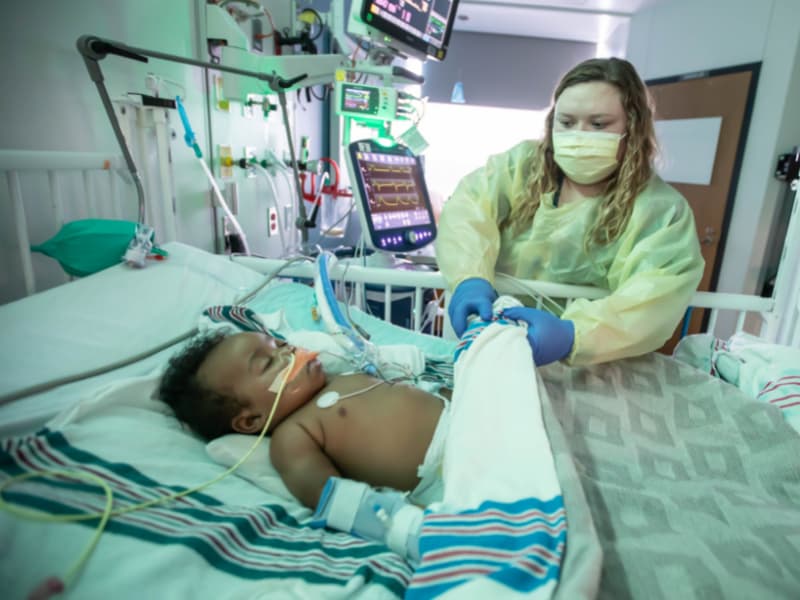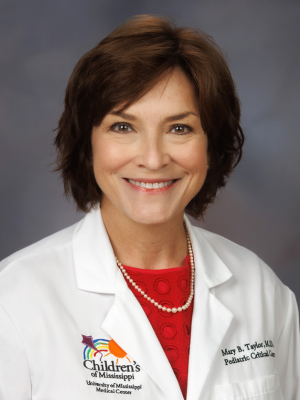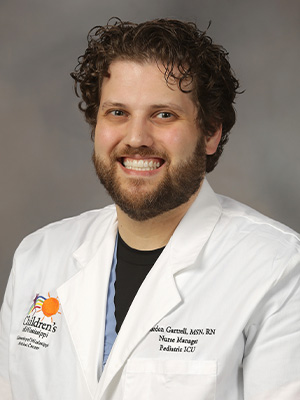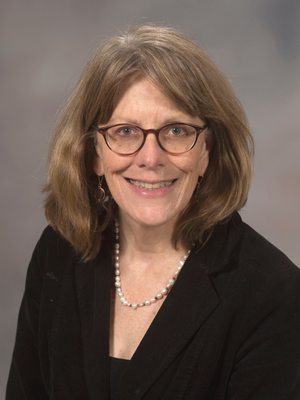During pandemic, UMMC pediatric specialists also fight RSV

At Children’s of Mississippi, there’s more than one virus infecting the state’s children, resulting in rising numbers of hospitalizations.
Respiratory Syncytial Virus, or RSV, has been rampant throughout the southeastern U.S. this summer in an off-season surge, prompting the U.S. Centers for Disease Control and Prevention to issue a health advisory last month.
RSV, a common virus that brings on cold-like symptoms, can cause serious illness in young children as well as in older adults. Spread via respiratory droplets when a person coughs or sneezes, RSV is the most common cause of pneumonia and bronchiolitis in children younger than 1. RSV leads to about 58,000 hospitalizations with 100 to 500 deaths among children younger than 5 each year.
In babies younger than 6 months, RSV results in irritability, poor feeding, lethargy and apnea, sometimes with fever. Older infants and young children will experience cough, sneezing, fever and sometimes wheezing. When children are having difficulty breathing, medical care should be sought immediately.
As of Monday, COVID cases in the state’s only children’s hospital included 10 on inpatient hospital floors and two in pediatric intensive care.
In contrast, 316 patients from the emergency department and inpatient floors had been diagnosed with RSV from July 1-30.

"We have had a huge number of RSV patients,” said Dr. Mary Taylor, Suzan B. Thames Chair, professor and chair of pediatrics. “We’re also seeing a rise in pediatric COVID-19 patients, including some who have both COVID-19 and RSV.”
In cases where children have both viruses, the RSV often results in more serious symptoms.
“Viral respiratory illnesses such as RSV can make children seriously ill, and COVID-19 is only complicating matters,” Taylor said.
Children with RSV and COVID-19 “seem to be sicker, requiring prolonged respiratory support,” said Dr. Jennifer Hong, associate chief medical officer for Children’s of Mississippi, “and some are also battling superimposed bacterial infections when admitted.”
When RSV intersects with COVID-19, serious illness often results.

“You don’t want to be fighting more than one virus at a time,” said Gordon Gartrell, nurse manager of pediatric intensive care inside the Kathy and Joe Sanderson Tower at Children’s of Mississippi, “and that is what some patients are facing.”
Four-month-old Ravontae Robinson of Jackson is one of those patients. Ravontae was taken by ambulance to Children’s of Mississippi with RSV and COVID-19.
“We called for an ambulance when we saw that he was having trouble breathing,” said his mother, Javondria Ransburgh.
Ravontae is breathing with the help of a ventilator and is in pediatric intensive care.
“I’m scared for him,” Ransburgh said.
She now advises parents to be cautious. “Be careful about letting others hold your babies,” she said, “or ask them to wear a mask. Don’t take chances.”
The increase of RSV this summer is a byproduct of the loosening of COVID-19 precautions, Gartrell said.
“We think that, because children were sequestered more last year, wore masks and washed their hands more, RSV wasn’t as prevalent,” he said. “This year, as things began to open back up and people stopped wearing masks and washing their hands as often, the number of RSV cases started climbing.”
Usually, RSV surges happen in the winter. Summertime hospitalizations tend to be less for viral infections and more for planned surgeries or trauma from accidents.
“In the summer, we usually have time to prepare for higher patient numbers in the winter, but we are seeing those numbers now,” Taylor said.
The start of a new school year could bring a rise in viral infections, said Dr. April Palmer, professor and chief of pediatric infectious diseases.

“I’m concerned about schools not consistently recommending masking at the start of the school year, which we know works,” she said. “I have looked at many school district plans for the upcoming school year, and many are outdated, made before the last COVID wave. I would ask parents to push their local schools and school boards for universal masking.”
For younger children, RSV is a danger. “RSV is worse for kids younger than 2, who are unable to wear masks.”
To fight RSV and other viral infections, Palmer recommends good hand hygiene and keeping children home from school or daycare when ill.
There is no vaccine against RSV, and treatment includes making sure children are getting enough oxygen and are not becoming dehydrated.
Having high levels of RSV now doesn’t mean the virus, or COVID-19 and its variants, won’t also infect children this winter.
New guidance from the CDC and the Mississippi Department of Health recommending that even those who are fully vaccinated against COVID-19 wear face masks in public places will likely curtail the spread of RSV as well as COVID-19.
“It’s hard to ask people to live the rest of their lives distanced and behind a mask, but a combination of social distancing, hand hygiene, mask-wearing and vaccinations is the only thing that will get us all back to some normalcy,” Gartrell said. “What we do now will determine what happens later. If we don’t take precautions now, we could have a rough winter ahead.”


